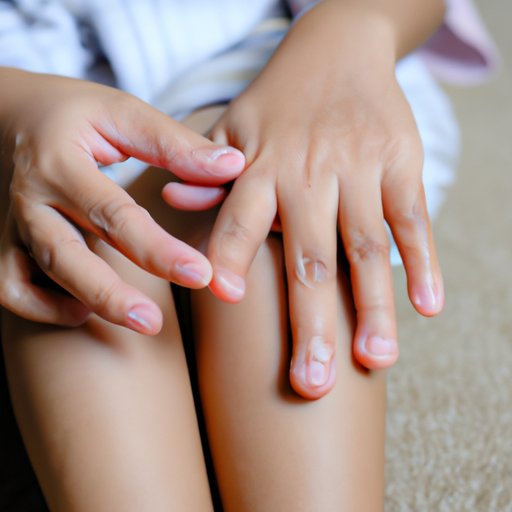
Introduction
Hand, Foot, and Mouth Disease is a highly contagious virus that can cause symptoms ranging from mild to severe in children and adults. It is caused by the Enterovirus, which usually leads to rashes, blisters, and sores on the body’s hands, feet, and mouth. Although the virus is common among children under five, adults who have not encountered it in childhood are also vulnerable. Early diagnosis and treatment are vital to preventing complications and long-term effects.
Causes of Hand, Foot, and Mouth Disease: What You Need to Know
The major cause of Hand, Foot, and Mouth Disease is contact with an infected person’s body fluids like saliva and mucus. The virus spreads through direct contact with an individual’s wounds, feces, or respiratory discharge. Poor personal hygiene and contaminated surfaces or objects also aid in the virus’s spread from one person to another. Health professionals report that the virus has a typical incubation period of three to six days before symptoms appear.
Hand, Foot, and Mouth Disease: A Parent’s Guide to Prevention
Parents can take various preventative measures to reduce the risk of their children contracting the virus. One of the most effective ways of preventing Hand, Foot, and Mouth Disease is to wash hands regularly with soap and running water. Avoiding contact with infected individuals can also prevent the virus’s spread. Every person should cover their noses and mouths when sneezing and coughing to ensure others do not contract the virus. In addition, regularly disinfecting your homes and surroundings can also help eliminate the virus.
The Link Between Outbreaks and Hand, Foot, and Mouth Disease
Hand, Foot, and Mouth Disease outbreaks often occur in community settings, making it a significant cause of concern, especially within school settings and daycare centers. An infected individual can quickly spread the virus to other children in their care, leading to an outbreak. The long-term effect of an outbreak is severe as it can lead to loss of working hours for parents, school closures, and other complications. To reduce the spread of the virus, healthcare professionals recommend reporting any suspected cases and isolating individuals who test positive for the virus.
Infected: How Hand, Foot, and Mouth Disease Is Contracted
The virus spreads quickly and easily from person to person. When an infected person talks, coughs, or sneezes, they release the virus into the air. The virus can also spread through contaminated objects, including doorknobs and toys, which harbor the virus. Children under five years of age are more prone to contracting the virus due to their immature immune systems. However, older children and adults can contract the virus. People with weakened immune systems, skin wounds, or cuts can also quickly contract the virus.
Hand, Foot, and Mouth Disease Symptoms: Spotting the Signs
Hand, Foot, and Mouth Disease symptoms often appear three to six days after exposure to an infected person or object. Common symptoms include light fever, sore throat, rashes on the hands, feet, mouth, and blister-like bumps. These symptoms usually start with blister-like bumps in the mouth, throat, and painful red rash on the soles of the feet, palms of the hands, and buttocks. In severe cases, the virus can cause dehydration and meningitis. Early medical attention is vital to prevent severe symptoms.
Understanding Hand, Foot, and Mouth Disease: Why It Happens and How to Stay Safe
Understanding Hand, Foot, and Mouth Disease, its causes, and ways to prevent its spread is crucial to staying safe and healthy. Every person must maintain hygiene, use proper hand hygiene, and avoid unnecessary contact with potentially infected people to reduce the risk of contracting the virus. Avoid public places if sick and inform friends, family, and healthcare providers as soon as symptoms appear.
Conclusion
Hand, Foot, and Mouth Disease is a virus that affects people of all ages and can have severe complications if left untreated. Every person must take preventive measures to protect themselves and prevent the virus’s spread. Parents should teach their children proper hand hygiene practices encourage healthy living, and avoid contact with infected individuals. In case of suspected symptoms, it is crucial to seek medical attention immediately. By following the tips outlined in this article, it is possible to avoid Hand, Foot, and Mouth Disease and stay safe and healthy.





